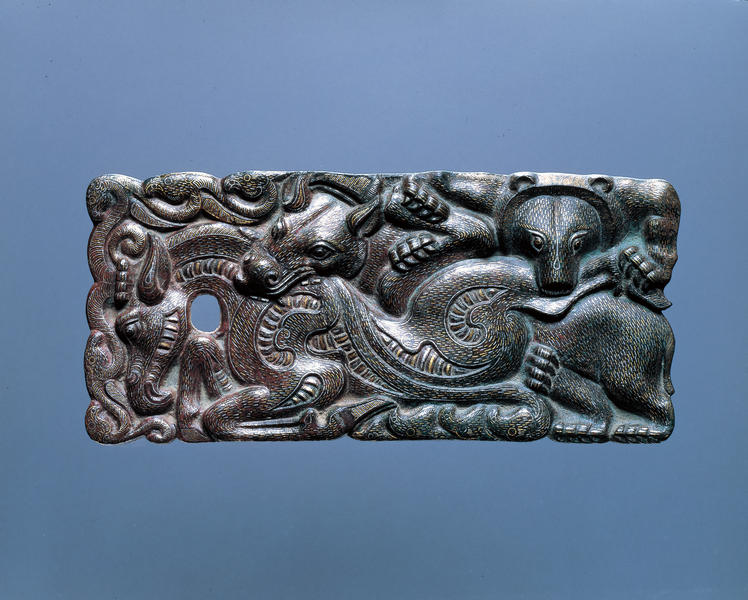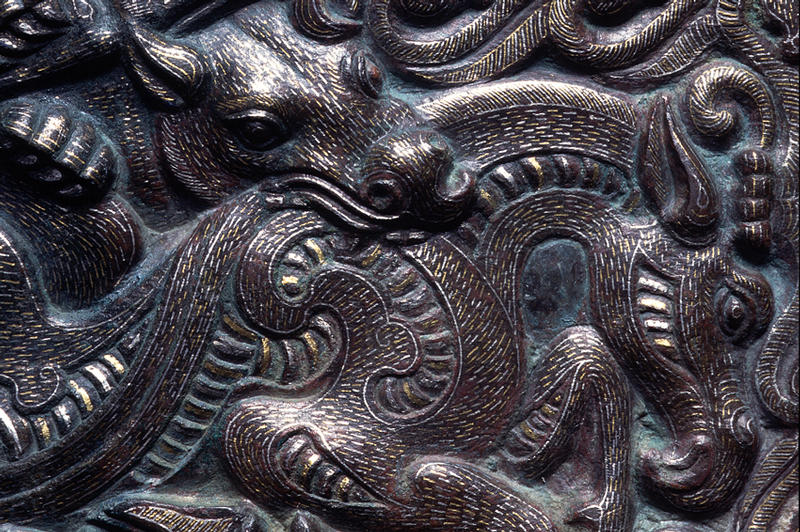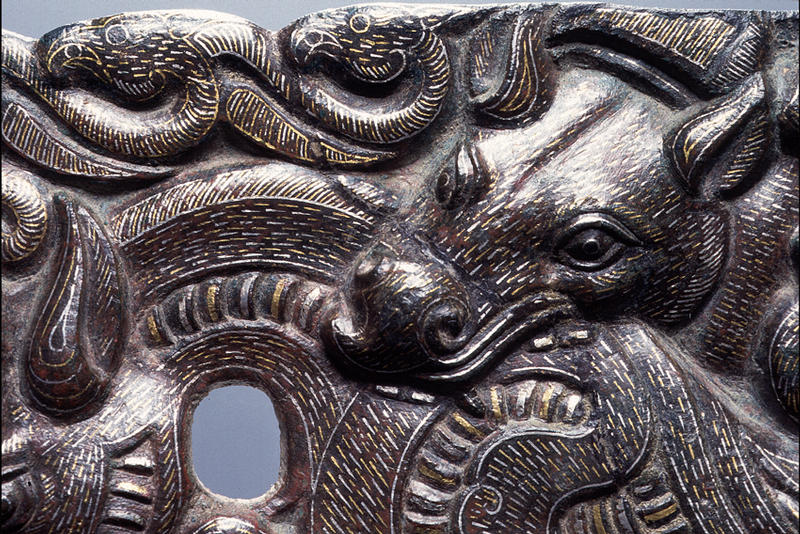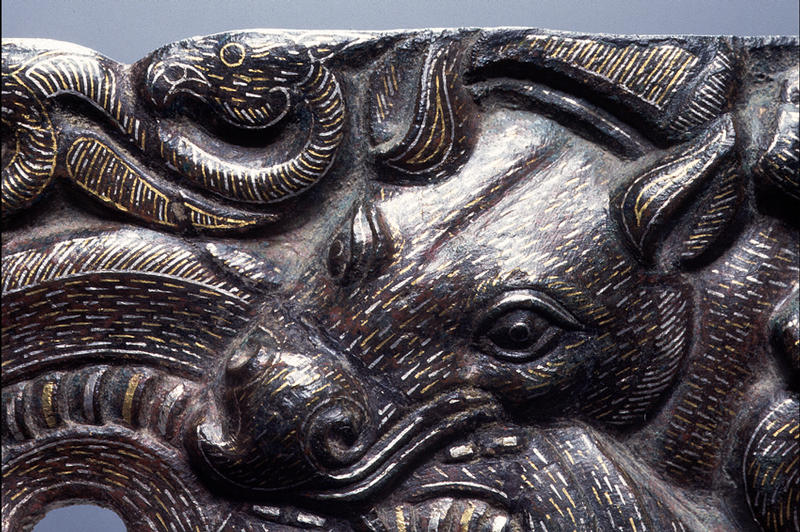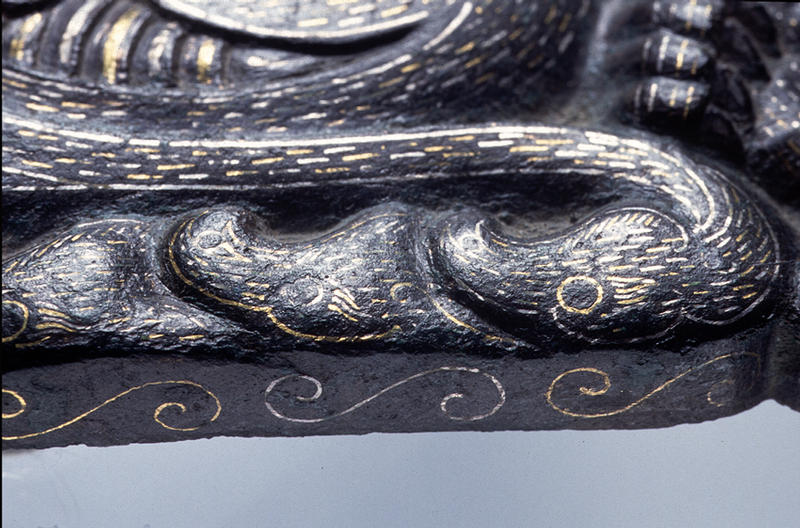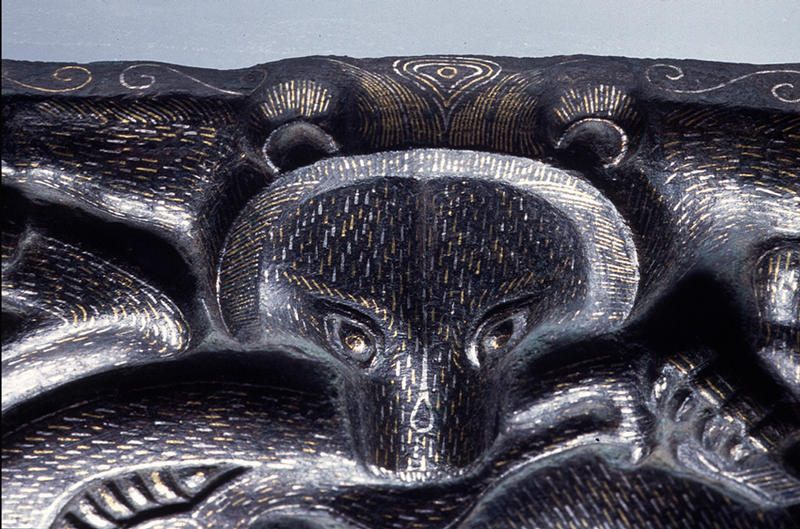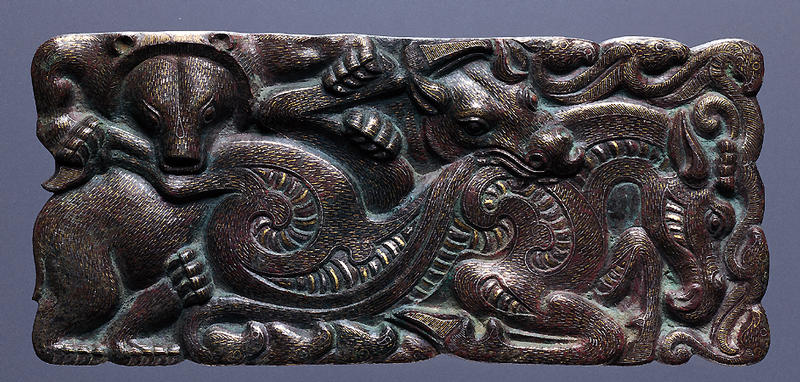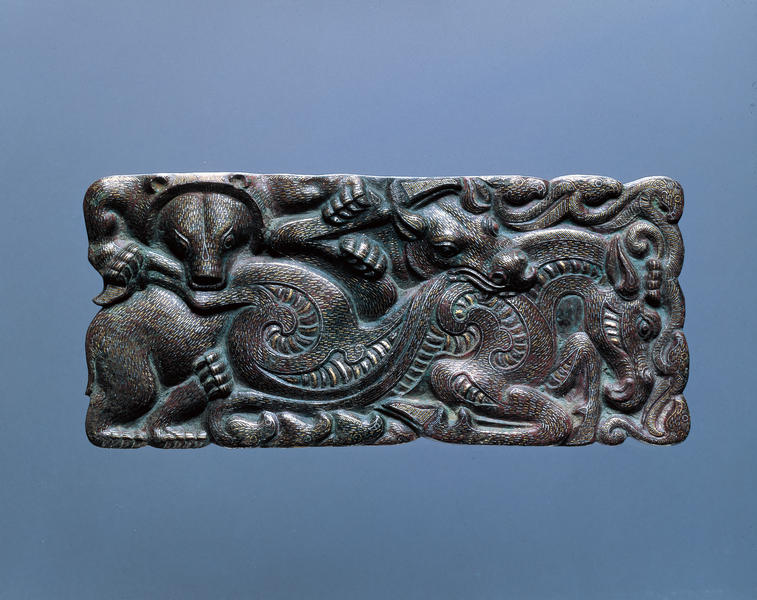Belt Buckle
- North China
- 3rd - 2nd century B.C.
- Bronze, gold and silver inlays
- H-6.6 W-14.5
Catalogue Entry
The major northern pastoral peoples contemporary with the Han empire were the Xiongnu, who by the end of the third century B.C. had formed a vast empire in the steppes beyond the Great Wall.1 These plaques represent one of the major types of belt ornament produced during the height of Xiongnu power. The two mirror-image plaques, number 110, together form one belt buckle. The other plaque, number 111, is the left-hand plaque of a mirror-image pair, of which the mate is missing. The perforation in the left-hand plaque of a buckle is part of the fastening system in which a cord was threaded through it and tied.
The plaque pair and the single plaque show the same mythological zoomorphic scene with minor variations. Each plaque depicts a fallen ungulate with raptor-head appendages and cloven hooves being attacked by a bear and a wolf. The ungulate is a mythological creature with the tips of its antlers and ends of its tail transformed into a series of raptor heads, here shown running along part of the border of the plaque. This mythological scene with its animal combat motif belongs to a larger symbolic system that evolved among pastoral peoples of the eastern Eurasian steppes. It appears to have been introduced into the iconography of those inhabiting the grasslands of northwest China during the late fourth century B.C. by pastoral groups from farther west who were fleeing the turbulence created by the Central Asian campaigns of Alexander the Great; it continued to be represented on belt ornaments in north China throughout the first century B.C.2
These plaques differ in detail and workmanship, suggesting that they were cast in different metalworking shops. The pair, 110, were both lost-wax cast, then very fine inlay channels were chisel cut into the surface and inlaid with gold and silver, a labor-intensive process. By contrast, the single plaque, 111, was cast by the "lost-wax and lost-textile" method, an East Asian variation of the lost-wax technique in which the wax model was supported by a piece of textile during the casting process, enabling the craftsman to produce a thinner final product while reducing both the expenditure of metal and money.3 The attachment loops on the reverse sides were cast integrally with the plaques. After casting, the single plaque was mercury amalgam gilded.
Some of the many belt plaques associated with the Xiongnu may have been made at workshops in China, whereas others could have been produced by Han Chinese craftsmen in their employ at their northern strongholds in Mongolia and the vicinity of Lake Baikal. The participation of Chinese craftsmen in providing luxury items for their pastoral neighbors explains how certain exotic artistic motifs and metalworking techniques were introduced into China during the Han period.4 In contrast to plaque 111, the pair of plaques, 110, represent the best of Western Han inlay technology. A closer look at the mythological scene reveals a major detail that relates to Chu rather than steppe iconography. Each raptor head holds a pearl in its beak, an iconographic characteristic associated with birds on Chu artifacts.
A pair of plaques made of gilded bronze that carry the same mythological scene was excavated from a Han-period antiquarians's tomb near Sandiancun in the eastern suburbs of Xi'an, Shaanxi province, where the Western Han capital of Chang'an was located.5
More recently, two superb gold buckles each consisting of mirror-image plaques were discovered at Xuzhou, Jiangsu province, among the grave offerings in the tomb of the Western Han prince Liu Wu, who died in 154 B.C.6 The buckles were still attached to silk belts and carefully laid in a wooden box. Interestingly, one pair of plaques was cast by the lost-wax and lost-textile method, while the other pair is heavier and was lost-wax cast.
ECB
1. For further information on the Xiongnu see Rawson and Bunker 1990, pp. 301-4; So and Bunker 1995, pp. 56-63.
2. This iconography has been extensively discussed in Jacobson 1984 and Bunker 1987.
3. For the lost-wax and lost-textile casting technique, see White and Bunker 1994, pp. 41-42.
4. For Sino-nomadic relationships, see So and Bunker 1995, especially chap. 5.
5. Zhu and Li 1983, p. 24, fig. 1.1, pl. 7.2; Bunker 1987, p. 52, fig. 1.
6. Wang and Qiu 1996, pp. 24-25.
